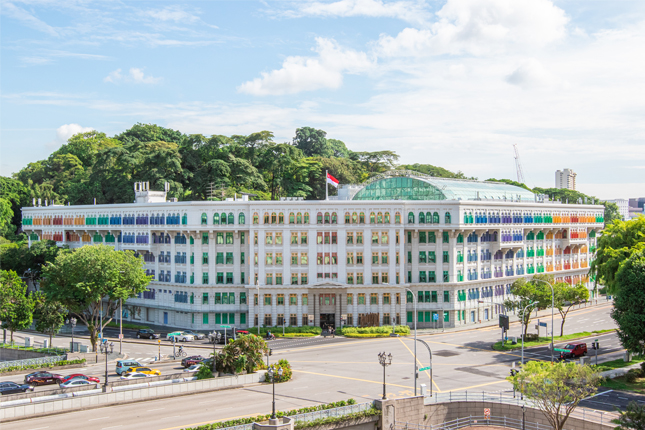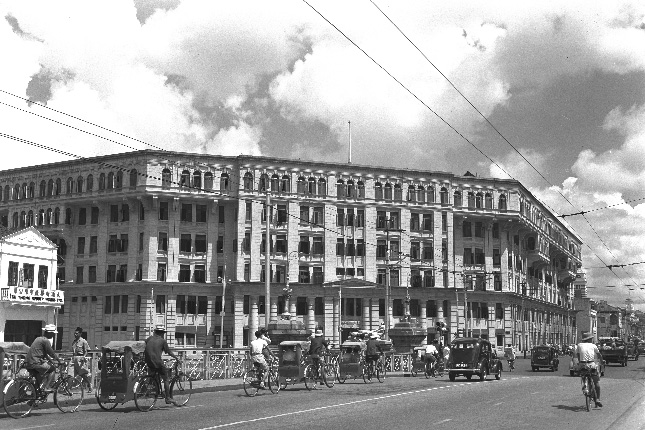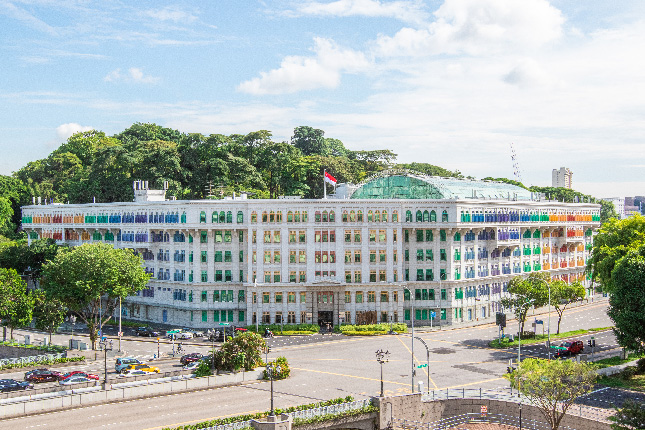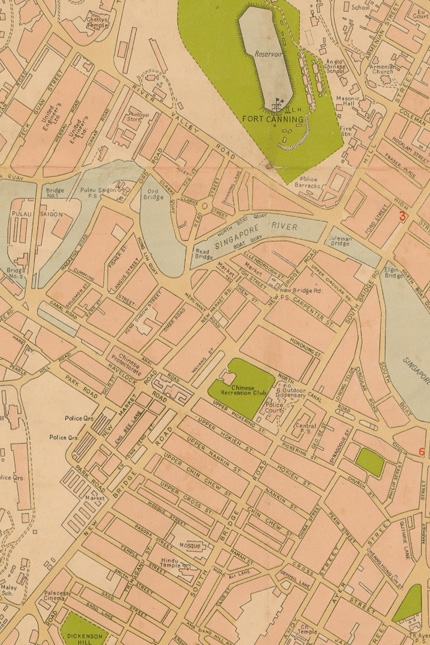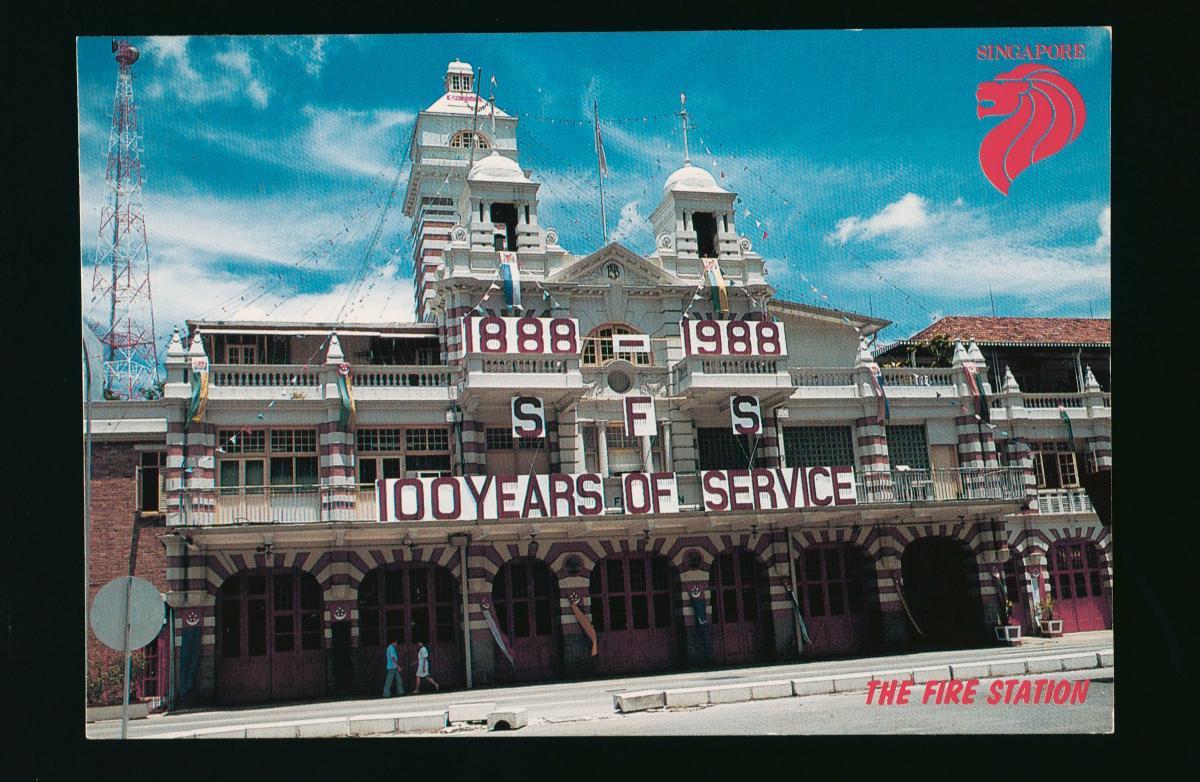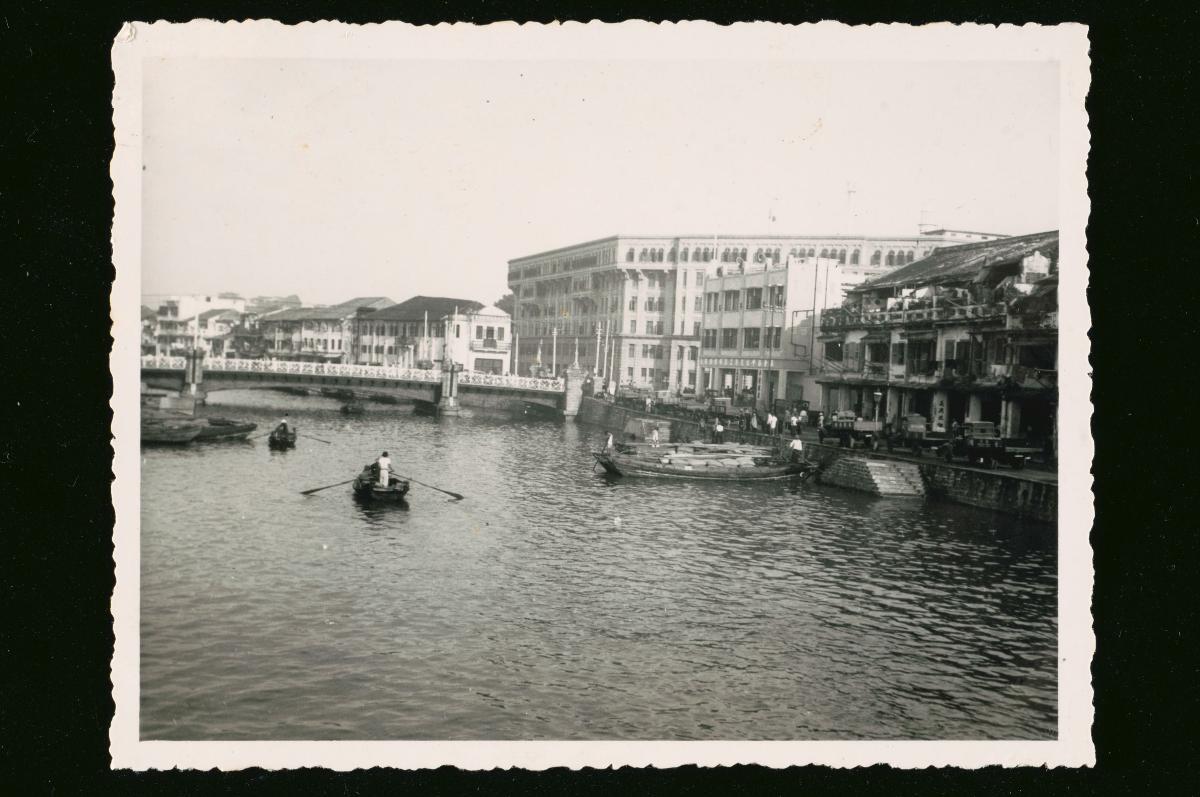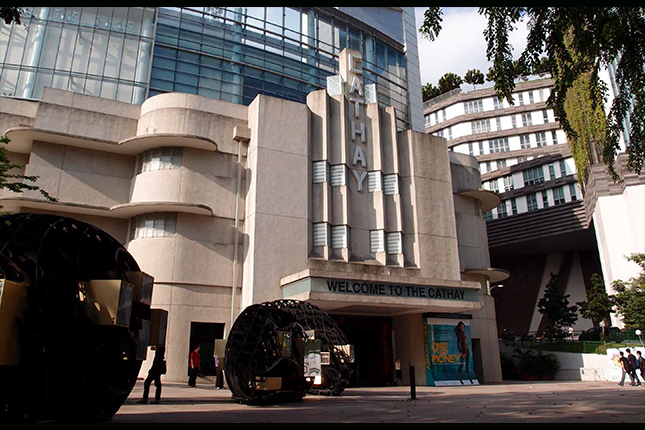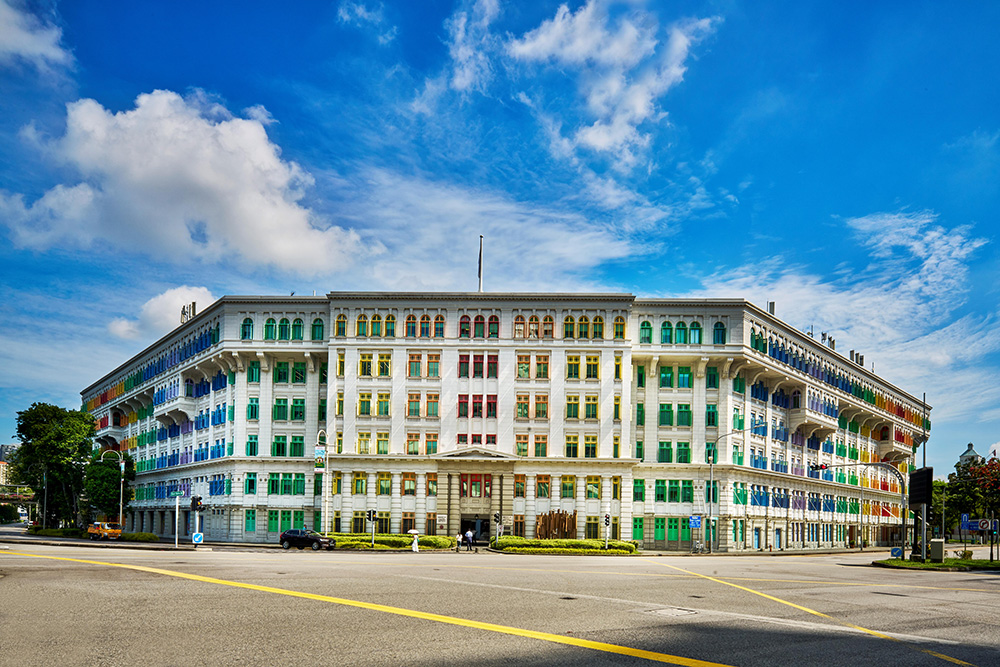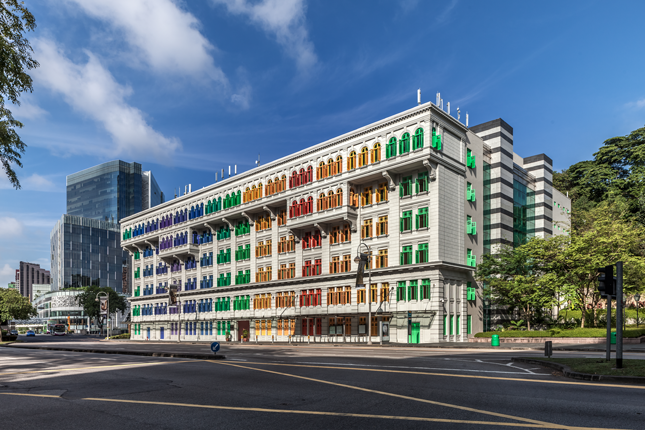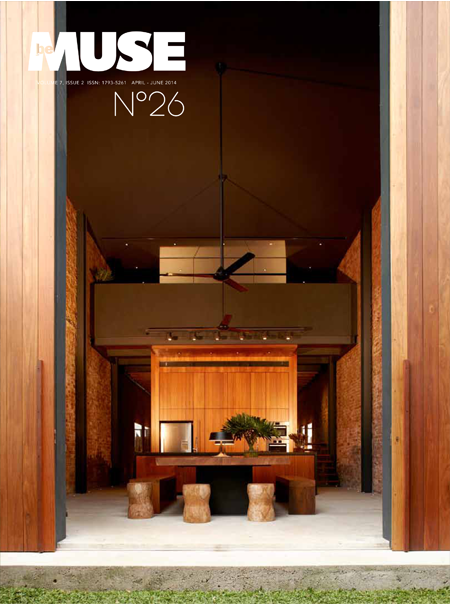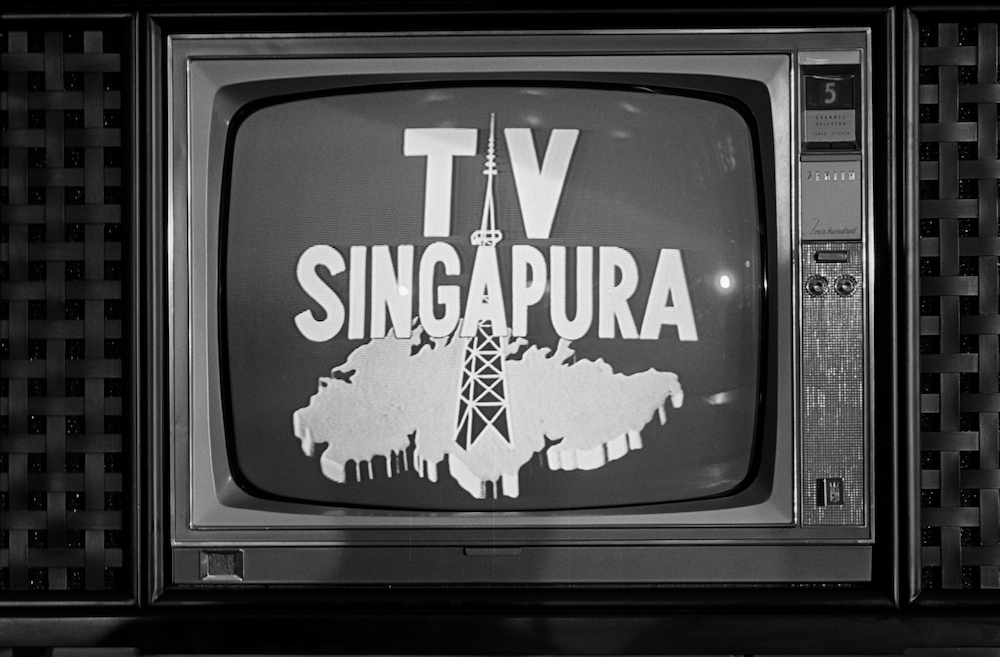Completed in 1934, the imposing Old Hill Street Police Station exerted a police presence in the city centre which had gained notoriety as the “Chicago of the East” by the 1920s. The proximity of the Hill Street Police Station to Chinatown, which was then the heartland of secret society activities, enabled larger police turnouts to respond more effectively during gang fights and outbreaks of violence. The provision of barracks also meant that police officers could be deployed at short notice to protect lives and properties during emergencies.
Modernising Police Infrastructure
Designed by Frank Dorrington Ward, the Hill Street Police Station was one of the largest government buildings of its time. Built at a cost of $634,263 (equivalent to $12.2m in 2020), the building was made of reinforced concrete and equipped with three lifts which was considered state-of-the-art in its time. Nicknamed the “Police Skyscraper”, it was constructed as part of an extensive infrastructural development programme implemented in the late 1920s by the Inspector-General of the Straits Settlements Police, Harold Fairburn. The scheme involved construction and refurbishment of police stations and barracks facilities.
Living Quarters
Barracks facilities, luxurious by the standards of that time, boosted the morale of officers and was seen as an incentive in recruitment. It showed the commitment of the Force in the 1930s in ensuring the well-being and morale of its men, which was a far cry from overcrowded police stations of early days.
The Old Hill Street Police Station could accommodate about 1,000 police personnel including their families.
The police station and cells, Constables’ quarters, canteen, recreation rooms and parade square occupied the ground floor. The Old Hill Street Police Station could accommodate about 1,000 police personnel including their families. The apartments for married European and Asiatic officers and their families were located on the upper floors. The well-appointed two-bedroom apartments for married officers consisted of a sitting room, a dining room, a kitchenette and verandah. With more than 900 double-leaf louvered windows to keep the building well-ventilated, it was also equipped with modern amenities like flushing toilet systems and lifts for access to higher floors. More than a workplace, the Old Hill Street Police Station was also home to the policemen and their families. The canteen was a place they shared meals and stories, forged friendships and built a strong camaraderie. Every few months, movies were screened at the open-air courtyard. Residents knew one another very well and children often played together at the communal playground.
Like other police stations, the Old Hill Street Police Station also served a civil defence function. As war approached in 1939, the building was fitted with air raid sirens to alert the municipal area in the event of bombing. However, it was not enough to cover the entire area and policemen with whistles helped to cover “blind spots”.
Serving Diverse National Functions
Like other police stations, Hill Street Police Station also served a civil defence function. As war approached in 1939, the building was fitted with air raid sirens to alert the municipal area in the event of bombing. However, it was not enough to cover the entire area and policemen with whistles helped to cover “blind spots”.
During the Second World War, the building was seized by the Japanese forces. However, it resumed its function as a police station and barracks after the war. The Arms and Explosives Branch of the Police Force also moved into Hill Street in 1949. The public approached the branch for safekeeping of their personal weapons. This service was discontinued in 1953, when the Police armoury became overwhelmed with a stockpile of more than 200 unclaimed revolvers, shot guns, rifles and a few thousand rounds of ammunition.
After the 1960s, the Police gradually shifted its personnel to other accommodations around Singapore. Hill Street was the last police station that provided housing for its officers until it was vacated in 1980. After 1983, the building was occupied by various civil service departments. These included The National Archives of Singapore, Board of Film Censorship, Ministry of Culture, and Prison Welfare Service Unit.
Owing to its rich history, the Old Hill Street Police Station was gazetted as a National Monument in 1998, and converted into the headquarters of the Ministry of Information and Arts in 2000. The building is occupied by the Ministry of Culture, Community and Youth and Ministry of Communications and Information today.
